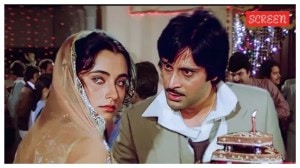JEE advanced 2017: Papers of moderate difficulty; check analysis here
JEE advanced 2017 analysis: Students and experts found the paper 2 to be more difficult than Paper 1.
 JEE advanced 2017 analysis: This year, the papers contained 183 questions each with 61 marks for each subject.
JEE advanced 2017 analysis: This year, the papers contained 183 questions each with 61 marks for each subject.
JEE advanced 2017 analysis: The Indian Institute of Technology (IIT) Madras conducted the Joint Entrance Exam (JEE) advanced paper 2017 on Sunday in which about 2 lakh candidates appeared. Experts found the paper 2 to be more difficult than Paper 1. Out of 2.2 lakh who cleared the exam, 1.71 lakh have applied for JEE Advanced 2017. The boards with major share in this number are the boards of Uttar Pradesh, Maharashtra, Rajasthan, Andhra Pradesh, Telangana among others.
This year, the papers contained 183 questions each with 61 marks for each subject and a total weightage of 366 marks. There was a mixture of Multiple Choice Questions (MCQs), integer type questions and passage type questions.
“In total, the paper had 21 multiple correct choice questions for 84 marks, 15 integer type questions for 45 marks and 18 passage questions made for 54 marks,” says Toppr.com VP Educational Content Rajshekhar Ratrey. He adds that the Physics and Mathematics portions were easier compared to last year while the Chemistry part was more difficult.
Paper 1:
Paper 1 as held from 9 am to 12 pm in nine versions. All the versions had the subjects in the same order starting with Physics and followed by Chemistry and Mathematics.
Read | JEE main 360/360 topper: Son of a school teacher, a nurse, a Dalit
“The first section (Physics) consisted of seven questions with four options where one or more than one options were correct,” says FITJEE’s Ramesh Batlish. He adds that one mark will be awarded for each correct answer. This gives candidates a chance to score more than one mark per question in case the question has multiple right answers. There is however a negative marking of two marks for each wrong answer. The maximum marks for the first section was 28.
The second section (Chemistry) was for 15 marks and comprised of five questions for which the response was a single digit from 0 to 9. There is no negative marking in this section and candidates can score up to three marks for the right answer.
“Chemistry was a blend of some easy problems and few relatively difficult ones. Physical Chemistry and Organic Chemistry portion were given a little bit more weightage than Inorganic Chemistry,” says Aakash Chaudhry, Director of Aakash Educational Services.
“The Chemistry exam had a mix of conceptual and calculation-based questions,” says Ratrey adding that this section contained 18 questions from 11 chapters.
Section three (Mathematics) included six questions of “matching the type” and carried a maximum of 18 marks. There were two tables and four options per question. Like section two, the response is a single digit from 0 to 9 but there is only one right answer out of four. Candidates will lose one mark for every wrong answer and gain three for ever correct response.
“In comparison to the practice of previous years, the Mathematics question required only basic understanding. Matrix match involving 3 Column was introduced, but if the student had got the hang of it, he/she would have found it easy to crack,” says Chaudhry.
“Overall, paper 1 is balanced between easy to moderate barring 1 or 2 questions in chemistry which needed study beyond NCERT,” says RL Trikha, Director of FIITJEE adding that there are some questions in Physics which require a careful analysis for “comprehension of language across choices”.
Read | JEE Main: Want to drop a year to get admission in IIT/ NIT? Read this
Paper 2:
The second paper for JEE Advanced 2017 was held from 2 pm to 5 pm in 10 versions, again, in the same order of Physics, Chemistry and Maths. Similar to Paper 1, the marks distribution across the sections (61 marks per section) were equal with and carried a total weightage of 183 marks.
The first section (Physics) contained seven Multiple Choice Questions (MCQs) with a single correct answer each. Candidates who answer correctly can score 3 marks but a wrong answer will lead to the deduction of one mark. This section has a total weightage of 21 marks.
“Section two (Chemistry) had some questions which were marked with bubbles to indicate that there will be no negative marking for them, while other questions in this section have a negative marking of two marks,” says Ajay Antony, Course Director of TIME Hyderabad. Correct answers in this section are for one mark with a total weightage of 28 marks.
The third section was for 12 marks and contained “comprehension based” questions of three marks each. There were four single answer MCQs .
“Mathematics was moderately difficult. A majority of the questions in this subject were concept-based, while the rest required the use of facts and formulae,” says Ratrey.
Read | Top 25 engineering colleges in India: NIRF ranking 2017
“Students who have been under a regular regime of practice should have no difficulty in cracking the papers,” says Trikha. Experts note that the cut off is likely to be at 35 per cent of the overall marks and 10 per cent of the total score for each subject, like it was in 2014. Last year, the cut off was held at 20 per cent overall and 10 per cent per subject.
To qualify for JEE advanced, students had to score at least 81 in the JEE main exam which was held on April 2, 2017 and was found to be of moderate difficulty. Only the top 2,20,000 candidates who cleared the main exam were shortlisted for the advanced paper to compete for 11,032 seats in the IITs.
Photos



- 01
- 02
- 03
- 04
- 05




























